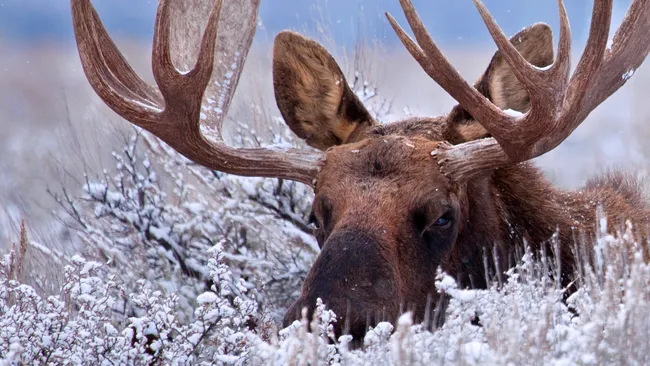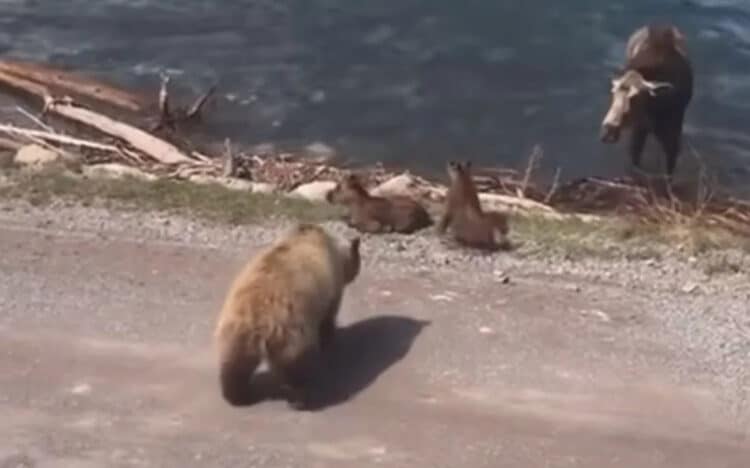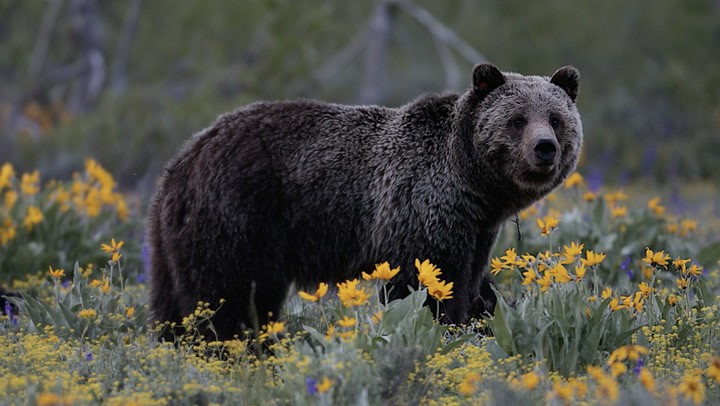A Michigan man nearly met his maker while he was hunting for moose in Alaska, after he and a group of hunters unknowingly stumbled upon a grizzly bear and her cubs.
Nicholas Kuperus, 33, was hunting in northern Alaska, approximately 300 miles north of Anchorage, when he and his group accidentally came across the path of the mother bear and her three young cubs on 6 September.
In an interview Memphis Live, the man’s uncle described how the interaction very quickly escalated, with the mother bear shifting into attack mode and lunging at the 33-year-old hunter.
“She was coming at him and he put his arm out,” said the man’s uncle, Mark Kuperus.
The man then attempted to shield himself from the defensive mother bear, sticking his arms out as a barrier against its teeth, leaving what the Alaska Wildlife Troopers described as “serious puncture wounds” to both of his outstretched limbs.
What ultimately stopped the attack, and likely saved Mr Kuperus’s life, was the bear spray he had tucked away, which he somehow managed to pull out despite the bear latching onto his body.
After deploying the non-lethal deterrent, two of his fellow hunters were able to further scare off the bear into the woods after firing off warning shots with their handguns.
After successfully removing the protective mother bear from the scene, the group then pivoted to getting their friend immediate medical attention. They were able to connect with the Alaska Wildlife Troopers after using a satellite communication device to request help.
The troopers arrived shortly after from Glennallen, arriving in PA-18 Super Cub that used a nearby ridgetop as a makeshift runway.
Mr Kuperus was transported by ambulance to Glennallen and then taken to a nearby hospital to treat the wounds covering his shoulders to hands.
By Wednesday, about two days after the attack, his uncle confirmed that his nephew was “on the mend”, according to Memphis Live.
“They stitched him up and he’s doing well,” he said.
Bear attacks in the US are exceedingly rare, but the National Park Service does note that they can occur, particularly in instances where the mammal is protecting their food or, as was the case in Alaska this week, their young cubs.
The service does have guidelines for how to be protected in the rare case you do find yourself confronted by a threatening bear but notes that your method of protection will vary depending on the kind of bear you’re faced up against.
For brown bears, with which grizzly bears are included, the service suggests that you “PLAY DEAD” and lay flat on your stomach with your hands clasped behind your neck.
“Spread your legs to make it harder for the bear to turn you over. Remain still until the bear leaves the area,” the recommendation on the website reads, noting that fighting back typically only increases the intensity of these kind of attacks.
For black bears, the advice is quite different.
“If you are attacked by a black bear, DO NOT PLAY DEAD,” it warns, adding that people who suspect they are being attacked by this kind of bear should try and escape or find a secure place such as a car or a building with a lockable door.
“If escape is not possible, try to fight back using any object available. Concentrate your kicks and blows on the bear’s face and muzzle,” the National Park Service advises.
Again, these kinds of attacks are not common, the park service notes. For instance, since 1980, there have been only two grizzly bear-caused human injuries in areas that are considered developed. While over the same time span, officials have only reported 34 human injuries occurring in the backcountry, which equates to an average of one per year.
This article by Johanna Chisholm was first published by The Independent on 8 September 2022.
What you can do
Support ‘Fighting for Wildlife’ by donating as little as $1 – It only takes a minute. Thank you.
Fighting for Wildlife supports approved wildlife conservation organizations, which spend at least 80 percent of the money they raise on actual fieldwork, rather than administration and fundraising. When making a donation you can designate for which type of initiative it should be used – wildlife, oceans, forests or climate.







Leave a Reply